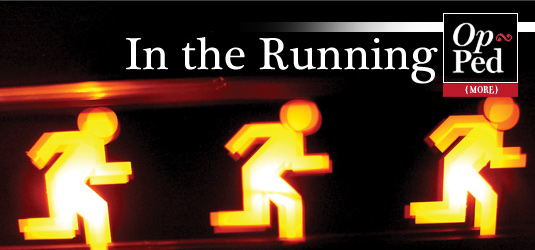Running is hot. Participation is up as many Americans have turned to a relatively affordable form of exercise, and many more partake in a growing number of charity-related fun runs and walks. Moreover, the industry is on the verge of a potential radical barefoot technology revolution that may change how people run altogether and, subsequently, the types of shoes they will buy. Thanks largely to the buzz being generated by the glove-like Vibram FiveFingers (sales have leapt from $400,000 to an estimated $40 million since the shoes hit the market in 2006) and the debut of barefoot styles by market verifiers Nike (Free) and Adidas (AdiZero), running is the talk of the town. The barefoot topic has been debated on HBO’s “Real Sports,” featured in The New York Times and posted all over the blogosphere. There’s also pavement proof: FiveFingers are now a regular sighting in New York—we’ve spotted them on a number of Central Park runners as well as the odd fashion-forward downtown hipster—and many elite personal trainers are sporting the shoes.
Not surprisingly, the industry is keeping stride with the expanding and evolving consumer base. Running specialty brands like Brooks, Saucony and Asics have introduced—or are on the verge of releasing—their own barefoot shoe interpretations, and retailers are catering to the technical needs and preferences of more serious enthusiasts. The Sports Authority, for example, plans to launch a new smaller concept, S.A. Elite, with a focus on higher-end footwear and apparel—much of it running related. Not surprisingly, the concept looks to be similar to the formats found in the healthy independent running specialty store channel—one of the few tiers that have weathered the recession relatively well. The first S.A. Elite location will open in Denver this August. “S.A. Elite’s format was the brainchild of extensive consumer research and customer insight, including advanced basket analysis, ethnography and other innovative primary research techniques,” says Jeff Schumacher, the chain’s executive vice president. Sounds as scientific as the tech-filled shoes it will sell. The stores will range in size from 12,000 to 15,000 square feet (the typical Sports Authority location is about 42,000 square feet). S.A. Elite will feature high-end lighting fixtures, custom brand shops and highly knowledgeable store associates, COO Greg Waters adds.
Apparently, consumers are willing to pay more for the expert service and technical products found in specialty locations. According to a recent NPD Group study, runners pay an average of $14 more than leisure wearers. “Purchases of running shoes that are ‘used for running’ continue to show strength as core runners remain passionate about their lifestyle,” notes Marshal Cohen, NPD’s chief industry analyst.
The running buzz offers a contact high for our industry overall. Historically, tech breakthroughs start here and then filter out to other categories. And any time footwear is front-page news and, in the case of barefoot technology, subject to intense debate that delves into millions of years of human evolution… Well, I say we run with it. —Greg Dutter




